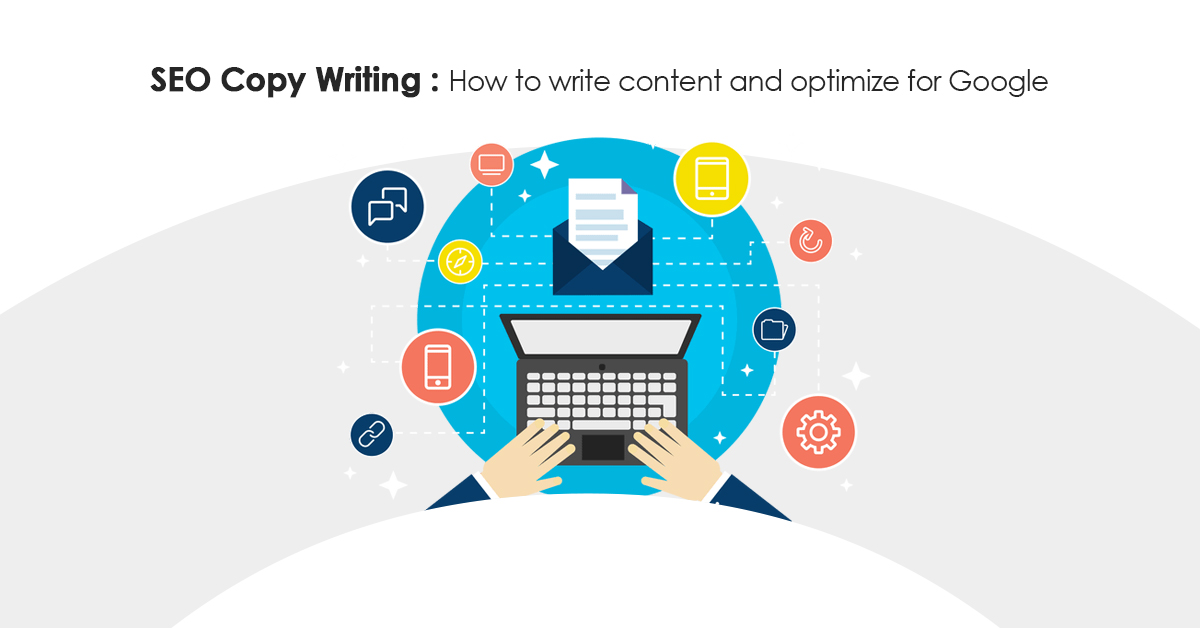One of the really difficult tasks for bloggers and content marketers is creating content optimized for search engines while also appealing to humans. If you’d like to grow your blog’s audience, you’ll need to improve your content strategy. And SEO copywriting is the most common way to achieve this.
Though SEO may appear complicated, it is much simpler than it appears, especially once you realize that writing for people rather than search engines is a best practice. Your online business needs to do more than just write content to succeed. Your content must achieve two objectives:
- A specific problem to solve
- Appeal to the end-users
SEO Copywriting
Ever since Google began rolling out new updates, SEO copywriting has actually evolved. It all comes down to writing great, valuable, and informative content aimed at particular keywords, as everyone will eagerly share it on online platforms.
Elements Of SEO Copywriting
Copywriting exemplifies some elements of high-quality content, such as promptness and visual appeal. When you use best practices of SEO frequently through most of your content, your content will generally make it to the top of Google’s search results, resulting in more traffic.
Below are the most important aspects of SEO copywriting
- Site speed
Since 2010, site speed has always been a deciding factor, which is also beneficial to users. You must improve your loading speed if it is longer than 2 seconds, which is really the industry norm.
- Headline
Even if your content is useful, your click-through rate will continue to suffer if the headline is sub-par. The headline is read 5 times more than the body copy on average.
Search users respond best to headlines that try to convey a particular idea or message. Number-based headlines are more likely to be shared on social networks such as Twitter and Facebook.
- Generate ideas
Let’s say you’re sort of stuck and can’t think of anything to write on. In that scenario, before you start hiring that SEO copywriter, you can try the Inbound now tool to create blog posts/article ideas. There are many resources available to help you write headlines that are both clickable and shareable.
- Analyzing the results
Although the majority of the search engine results aim for a keyword and are SEO-friendly, most of the headlines aren’t really appealing to the readers. Inserting a long tail to the headline could help people who are looking for specific information.
You can create articles that will rank highly on Google search results and generate clicks from potential clients or customers once you gain knowledge in SEO copywriting.
- Content
It is an important part of SEO copywriting. The main reason people use Search engines like Google is to find useful information. It’s important to remember that the latest SEO copywriting goes beyond keyword placement and targeting. Writing content that identifies keyword intent is the best strategy right now.
A powerful introduction is required for each and every copy of the content you create. The introduction is the section of your content that follows the headline and, if applicable, the sub-headline. At least one or more of your targeted keywords, preferably a long-tail, should be included in your introduction.
- Meta description
Use meta descriptions to assist search results in finding your content even before you write it and again once you publish it. Meta descriptions assist users in comprehending the particular topic and why your keywords continue to show up in your content.
When people search for targeted keywords relevant to their page, Google displays the meta description as a snippet. If the meta description isn’t flowing well, you don’t have to incorporate your actual keywords.
- Keyword Frequency and density
Keyword density and frequency aren’t impactful as before Google began rolling out regular updates. Yet, they are, to this day, important components of SEO content.
Even so, keyword density has an influence on organic ranking. If the keyword density is more than 5.5 percent, you may be accused of stuffing keywords, and Google may penalize your page.
- Page Links
Google sees page links as a sign that you’re social and connected. You have useful content that can be found by people elsewhere. It’s possible that this content can be your own or that it’s from some other creator or website.
There are no hard and fast rules when it comes to linking to other websites. Internal linking has no fast and hard rules, either. However, if you’re a smart digital marketer who is willing to dominate the search engines, you must:
- Include links to relevant pages both outside and inside your site.
- Include links to more in-depth content or guides
- Use suitable anchor text that flows in a natural manner with the content to create a link.
Writing helpful content for people.
Words have a lot of power and can elicit a lot of interest. Assume you can string words at a time to create a useful form of content. Your main audience will adore you for this, and they’ll stay around as a result. There is no other option than to create excellent content.
To push organic traffic, your content requires 3 main elements:
- Optimize for a large number of keywords with a large number of searches
- Obtain a sufficient number of reputable backlinks
- Write about a topic or idea that will never go out of style.
- Keyword research
The intent is the most crucial element of every keyword used by searchers. You need to understand what every keyword stands for before even writing quality content to solve a specific issue.
- Informational keywords
The majority of informational keywords are “how-to” in nature. You can create helpful content around these keywords, but don’t assume to turn readers into prospects since most people wouldn’t want to buy. Instead of that, use these keywords to grow and engage your audience, and strengthen your brand.
- Commercial keywords
These keywords reveal a buyer’s intent. The searcher’s “desperation” is usually evident in these keywords. Reviews, buy, comparison, order, best, free shipping, fast, and other commercial keywords usually have specific prefixes and suffixes.
- Targeting keywords
Google even now does use keywords to determine the topic of a website page. When it comes to these keywords in content, stick to a three-step strategy.
- In the headline, include the primary keyword.
- In the introduction, title tags and meta description, use alternative keywords.
- Write in a natural way to please the readers and then add the primary keyword in conclusion.
- Storytelling
Because people enjoy good stories, storytelling can help you stand out. You will gain popularity if you really can incorporate your brand’s story into an article, blog, or video.
When you use brand storytelling to improve your traffic, organic ranking, and sales conversions, you’re on to a winner.
- Humour
Writing useful content which solves a specific issue in a monotonous way is not all that SEO copywriting entails. Your content must also pique the interest of your audience. They must be eager to click on the headline, read the introduction, and scroll to the body of the text. That is what persuasive writing entails. It doesn’t make a difference how much you create. If you can make it, people will find it engaging.
- Case studies
Case studies are among different kinds of content that can help your website gain more visitors. Case studies can be interesting to read. Because they’re useful, they’ve been ranked in Google’s top ten numerous times.
Getting people through SEO Copywriting
Using key points to highlight important elements in your content or topic is one way to motivate people to take action. Make a list of 3 to 4 significant advantages that you will make up before writing a blog or article. This is crucial because it aids in the creation of compelling paragraphs and headlines of the article.
- On-Page Optimization
On-page SEO doesn’t seem to be difficult or time-consuming. This topic has been the subject of numerous blog posts.
What tends to happen on your website seems to be the basis of an impactful SEO campaign. To put it another way, pay close attention to how to target your keywords, the anchors you use to link meta tags, internal pages, and so on. Internal links and other elements that add value to your site are extremely important.
- Off-page Optimization
The general public largely determines the relevance and value of your content in today’s online marketing. Off-page factors are also used by Google to determine the legitimacy of your website content.
The following are five effective off-page strategies:
- Using social media, create and engage an enthusing fan base.
- Get benefited from local SEO to promote your business.
- Business reviews can help to build brand trust.
- Local citations and NAP(Name Address Phone number) consistency should be promoted.
- Blog outreach, competitor link analysis, guest posting, blogging, and networking are ways to build links.
Conclusion
By following these SEO copywriting strategies to increase your blog’s traffic, even if you don’t achieve the same growth rate, you’re more likely to generate more traffic, improve your brand, and fall in love with content marketing.
























